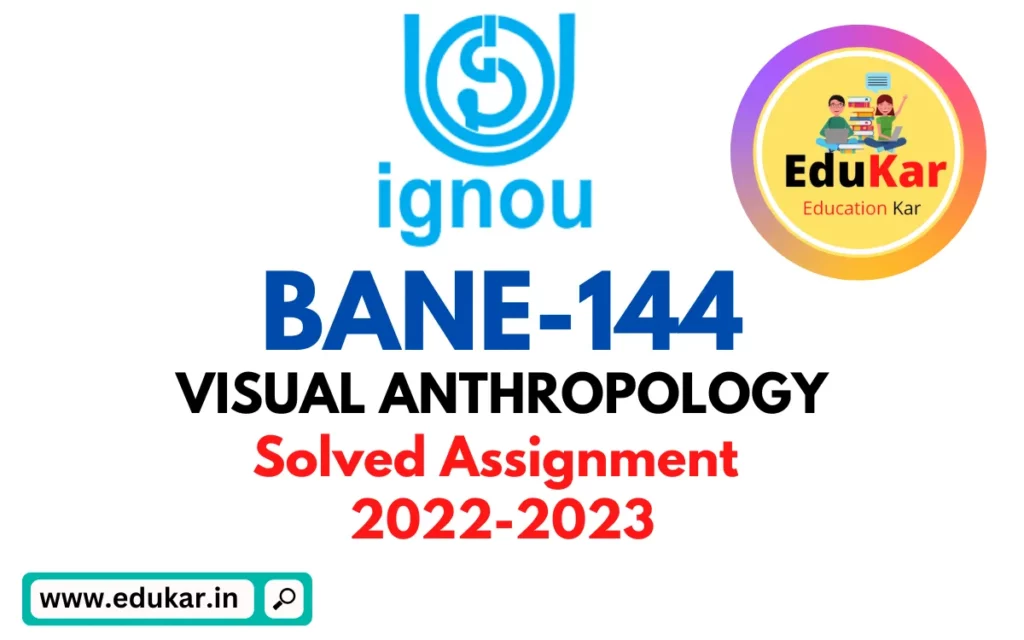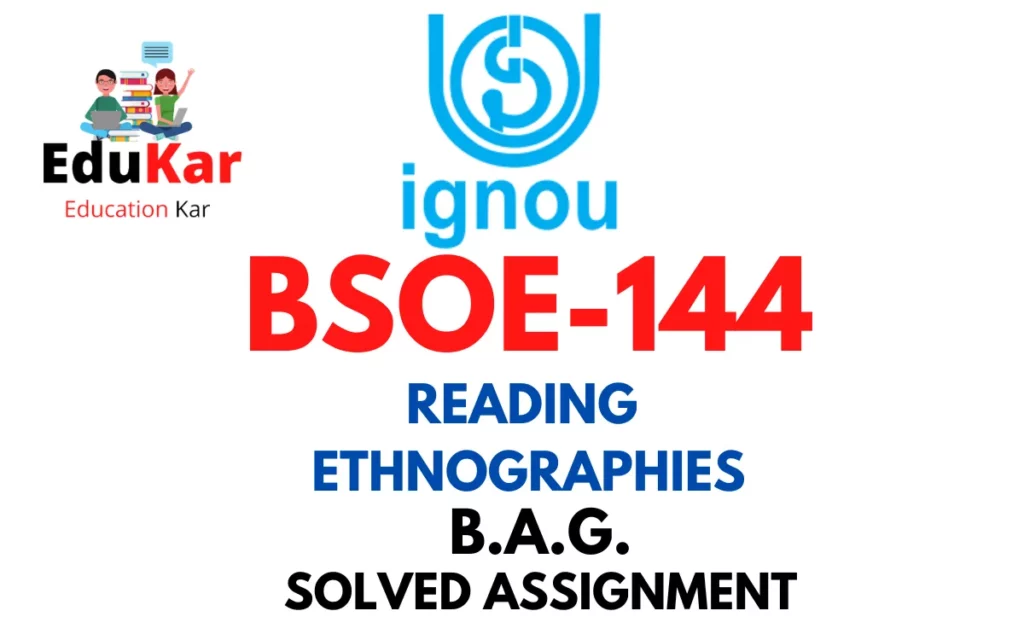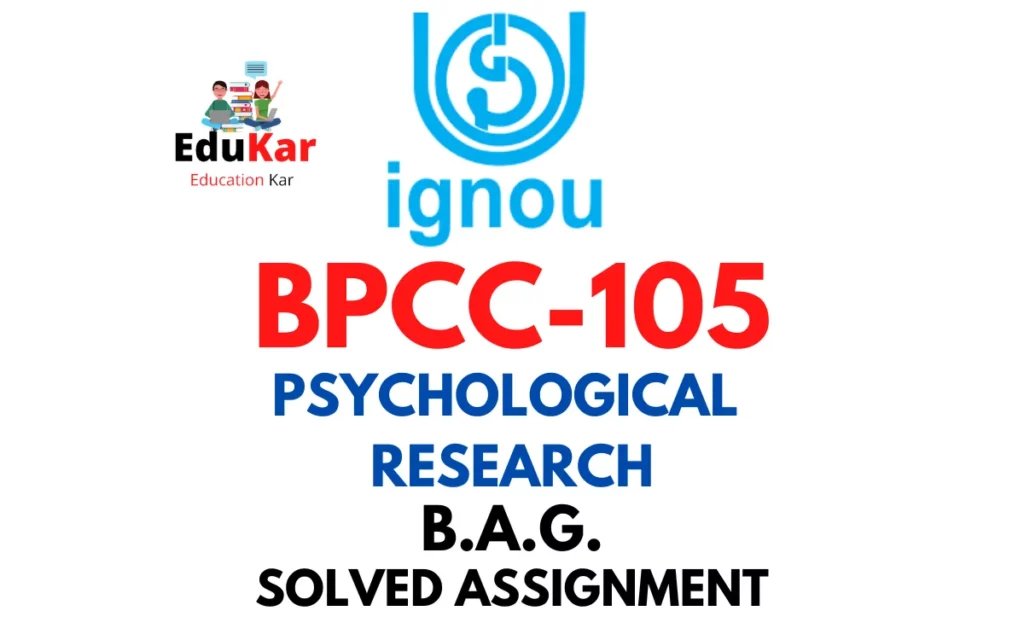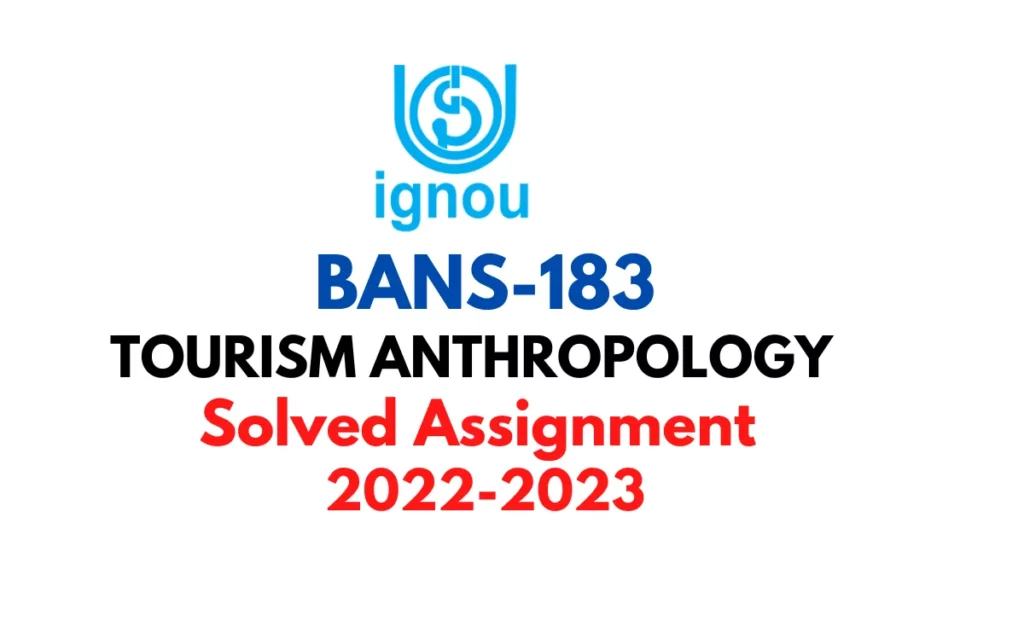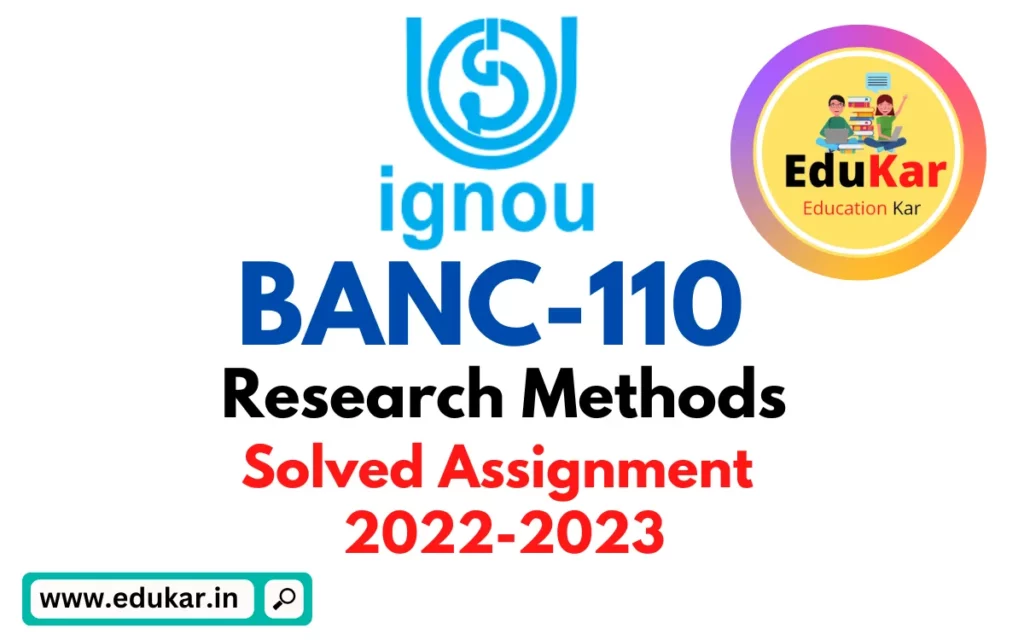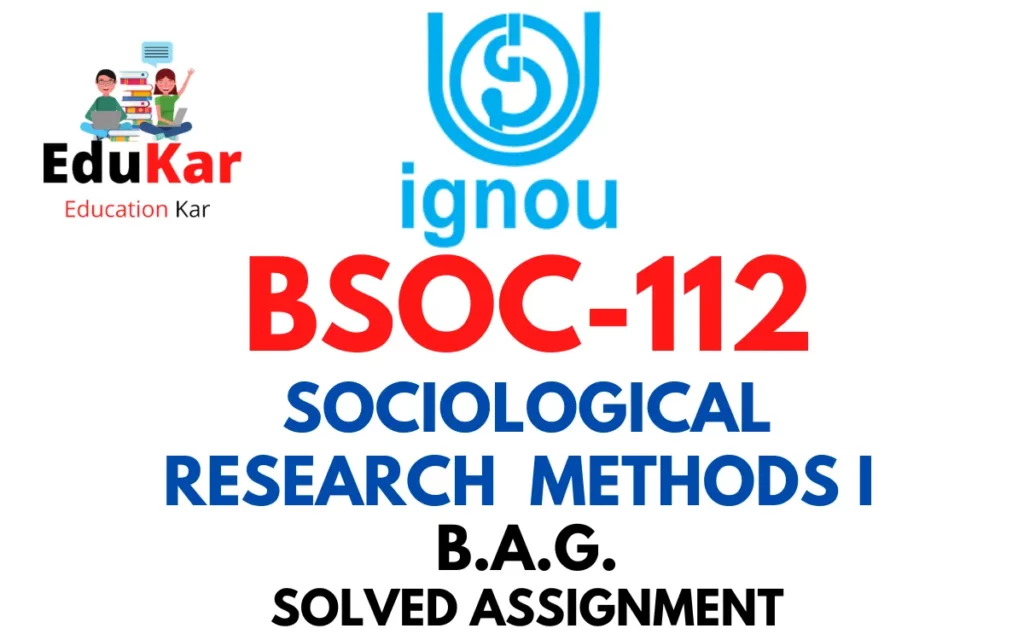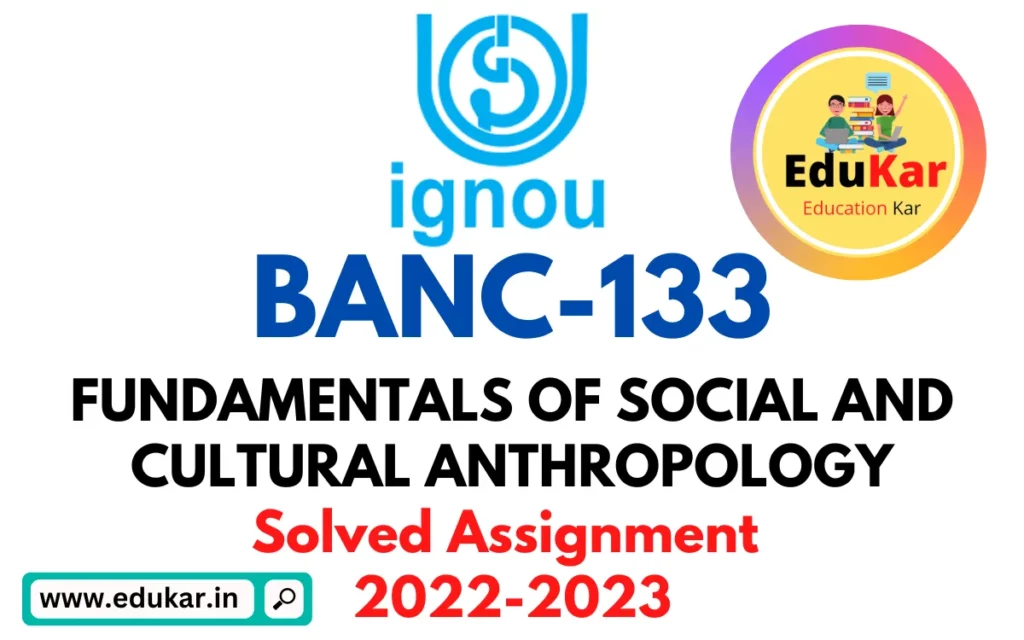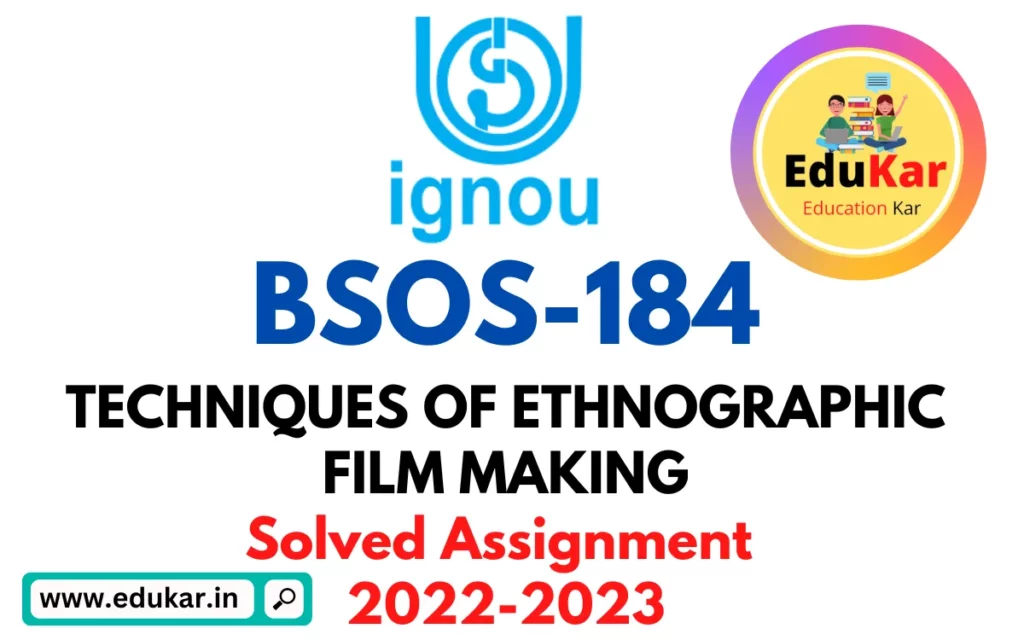Contents
- 1 Assignment A
- 2 Answer the following in about 500 words each.
- 3 1. What is ethnography and what is ethnographic film?
- 4 2. Discuss the role of ethics in visual research.
- 5 Assignment B
- 6 Answer the following questions in about 250 words each.
- 7 3. Write a note on the contributions of Margaret Mead to Ethnographic film.
- 8 4. Bring out significance of social media.
- 9 5. Examine the relationship between photography and modernity.
- 10 Assignment C
- 11 Write a note on the following in about 100 words each.
- 12 6. Alfred Cort Haddon
- 13 7. Hypermedia
- 14 8. Reflexivity
- 15 9. Digital Ethnography
- 16 10. Photo Essay
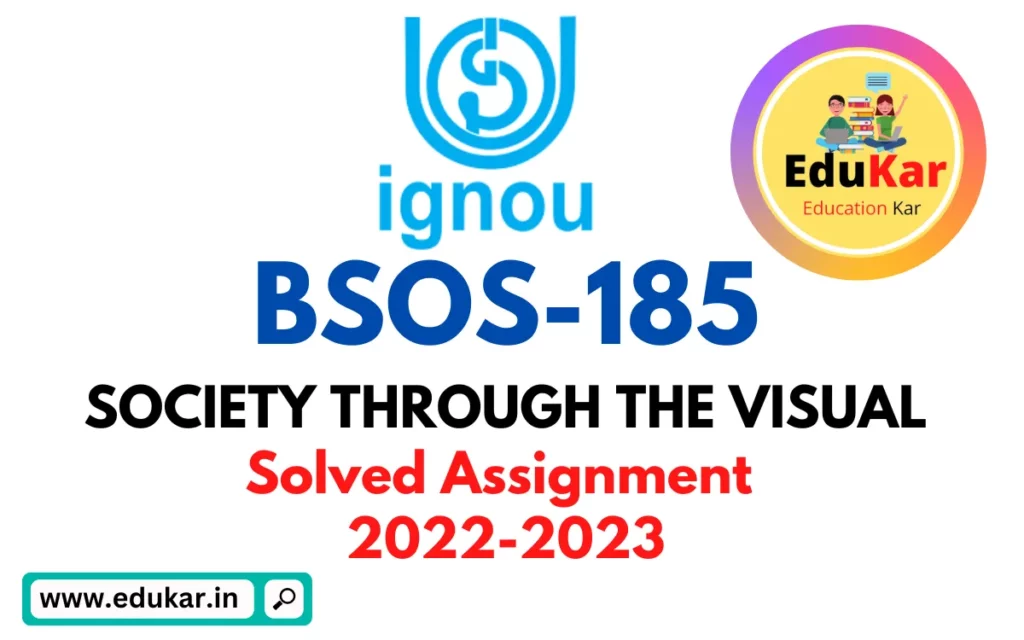
| Title | IGNOU: BSOS-185 Solved Assignment 2022-2023 (SOCIETY THROUGH THE VISUAL) |
| University | IGNOU |
| Degree | Bachelor Degree Programme |
| Course Code | BSOS-185 |
| Course Name | SOCIETY THROUGH THE VISUAL |
| Programme Name | Bachelor of Arts (General) |
| Programme Code | BAG |
| Total Marks | 100 |
| Year | 2022-2023 |
| Language | English |
| Assignment Code | ASST /TMA / July 2022-January 2023 |
| Last Date for Submission of Assignment: | For June Examination: 31st March For December Examination: 30th September |
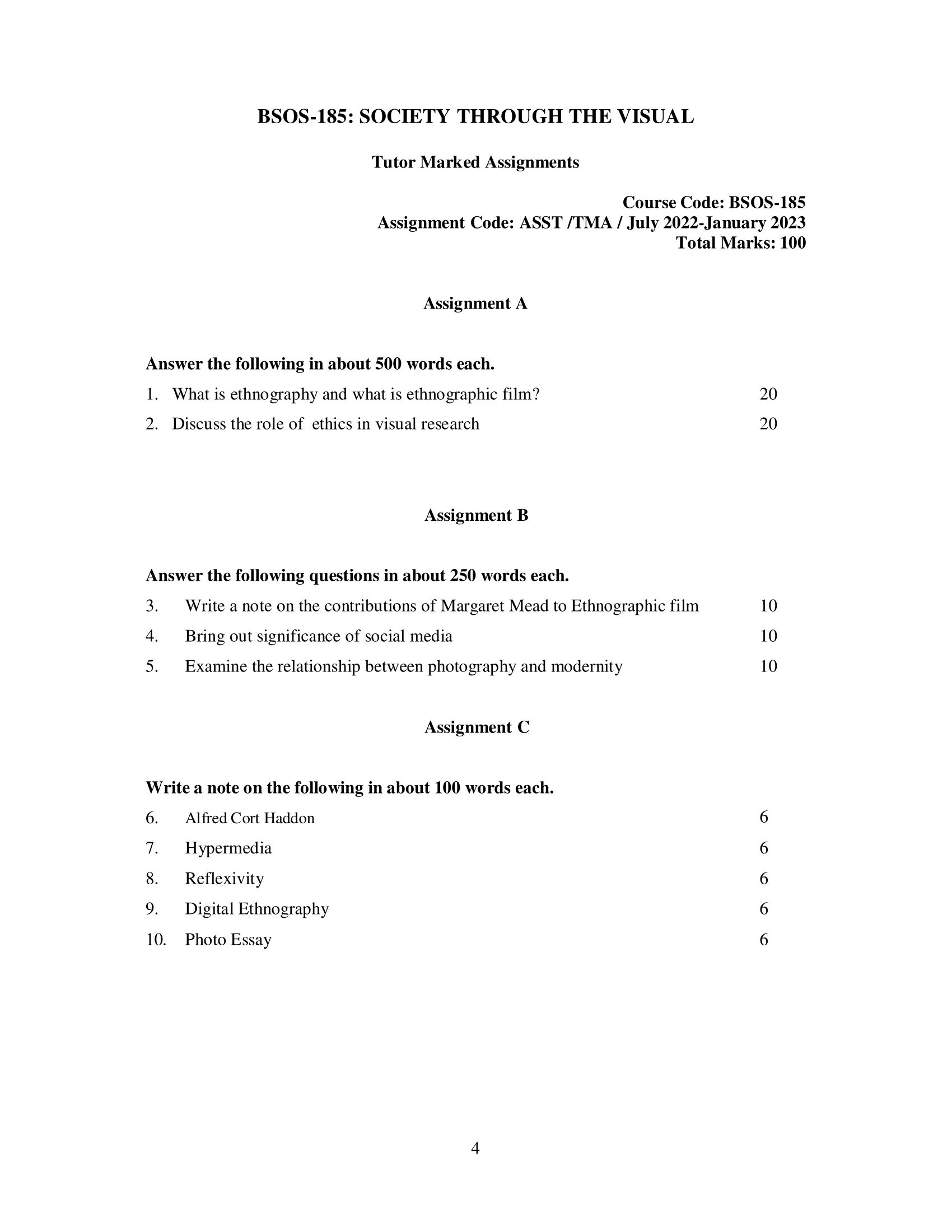
Assignment A
Answer the following in about 500 words each.
1. What is ethnography and what is ethnographic film?
Ans: Ethnography is a qualitative research method that seeks to understand and describe cultural phenomena through the study of human behavior, beliefs, and customs in specific social contexts. It is often used in the fields of anthropology, sociology, and cultural studies and involves the researcher immersing themselves in the lives and experiences of the people they are studying. This involves participant observation, which means that the researcher actively takes part in the daily activities of the community they are studying, and also engages in in-depth interviews and the collection of artifacts and other materials related to the culture.
Ethnographic film, on the other hand, is a type of documentary film that uses ethnographic research methods to capture and document cultural practices, traditions, and beliefs. This type of film is often used to represent the voices and perspectives of communities that have been marginalized or underrepresented in mainstream media. Ethnographic films can take many forms, including observational documentaries, visual essays, and hybrid forms that incorporate elements of fiction or performance.
One of the main goals of ethnographic film is to provide an intimate and nuanced representation of cultural life that is often missing from mainstream media. This can involve capturing the rhythms of daily life, such as work, play, and family interactions, as well as exploring the beliefs, customs, and traditions of the community being studied. Ethnographic films often strive to provide an empathetic and respectful representation of the culture being studied, and to give voice to communities that are often overlooked or marginalized in mainstream media.
There are several key elements that make ethnographic films unique, including their focus on cultural practices, traditions, and beliefs, as well as their use of participant observation and other ethnographic research methods. Ethnographic films also tend to be more focused on the individual experiences of people within a culture, rather than simply providing an overview of cultural practices and traditions. This allows ethnographic films to provide a more nuanced and empathetic representation of cultural life, and to explore the complexities and contradictions that are often present within cultural practices.
2. Discuss the role of ethics in visual research.
Ans: Ethics plays a crucial role in visual research, as it sets the standard for the responsible and respectful use of images and other visual data in research. Visual research is a broad field that encompasses a wide range of activities, including the use of photographs, videos, and other visual media in anthropological, sociological, and other social science research. Visual data can be incredibly powerful, providing insight into the lives, beliefs, and behaviors of people, communities, and cultures around the world.
However, the use of visual data also poses significant ethical challenges, as it requires researchers to consider the rights and interests of their subjects, as well as the impact that their research may have on them. As such, it is essential that visual researchers are aware of the ethical implications of their work and take steps to minimize any harm or negative impact that their research may have on their subjects.
One of the key ethical issues in visual research is informed consent. This involves ensuring that subjects are fully aware of the nature of the research and the use of visual data, and that they have voluntarily agreed to participate in the study. This is particularly important when working with vulnerable or marginalized groups, such as children, people with disabilities, or those who may be at risk of harm as a result of the research. Researchers should take care to obtain written or verbal consent from each subject, and to explain the purpose and use of the visual data in a clear and accessible manner.
Another key ethical issue in visual research is the protection of privacy and confidentiality. Visual data often contains sensitive and personal information, and it is important that researchers take steps to ensure that this information is kept confidential and secure. This may involve using pseudonyms or other means of obscuring the identity of subjects, and taking steps to store and manage visual data securely.
In addition, researchers should also consider the potential impact of their work on their subjects, and take steps to minimize any harm or negative impact that their research may have. For example, visual research may involve exposing subjects to sensitive or controversial issues, or may result in images or other visual data that are potentially damaging or embarrassing. Researchers should take care to consider the potential consequences of their work and take steps to mitigate any negative impact, such as providing support or counseling to subjects who may be affected.
Finally, visual researchers should also consider the cultural and historical context of their work, and take steps to respect and honor the cultural norms and values of their subjects. This may involve understanding the cultural significance of visual images, such as those related to religion, identity, or political beliefs, and taking care to use visual data in a way that is respectful and culturally appropriate.
Assignment B
Answer the following questions in about 250 words each.
3. Write a note on the contributions of Margaret Mead to Ethnographic film.
Ans: Margaret Mead was an American cultural anthropologist who made significant contributions to the field of ethnographic film. Born in 1901, Mead was one of the first anthropologists to use film as a tool for documenting and studying cultures. Her work revolutionized the way that anthropologists approached their field and paved the way for future generations of filmmakers and anthropologists to explore new and innovative ways of studying and documenting human cultures.
Mead’s most famous contribution to the field of ethnographic film was her work on the Manus people of the South Pacific. This work, which was documented in the film “Coming of Age in Samoa,” is considered to be one of the first ethnographic films ever produced. The film provides an intimate look into the lives and customs of the Manus people, and offers an insightful and thought-provoking commentary on the challenges and rewards of growing up in a traditional society.
Another important contribution that Mead made to the field of ethnographic film was her use of film as a tool for studying human behavior. She used film to study the way that people interact with one another in different cultures, and to explore the underlying social and psychological dynamics that drive human behavior. Through her work, Mead was able to shed new light on the complex relationships between individuals and their cultures, and to provide a deeper understanding of the role that cultural norms and values play in shaping human behavior.
In addition to her work as an anthropologist, Mead was also a passionate advocate for the use of film as a tool for promoting cultural understanding and tolerance. She believed that by sharing images and stories from different cultures, filmmakers could help to bridge the gap between people from different backgrounds and encourage greater understanding and respect for diversity.
Overall, Margaret Mead’s contributions to the field of ethnographic film were profound and far-reaching. Her work continues to inspire and influence filmmakers and anthropologists today, and her legacy continues to inspire new generations of scholars to explore the rich and diverse cultures of the world.
Ans: Social media has become an integral part of our lives, playing a significant role in the way we communicate, connect with others, and consume information. Its widespread adoption and use have dramatically changed the way we interact with each other, as well as the way that organizations and businesses communicate with their audiences.
One of the most significant benefits of social media is its ability to connect people from all over the world, regardless of physical distance. Social media platforms such as Facebook, Twitter, and Instagram allow people to connect with friends and family members, as well as with people who share similar interests and hobbies. This has the potential to break down cultural barriers and promote greater understanding and empathy between people from different backgrounds.
Another key aspect of social media is its role in shaping public opinion and discourse. Social media provides a platform for individuals and groups to share their thoughts and ideas with a large audience, and has become an important tool for activists and organizations to raise awareness and mobilize support for causes and issues. This has the potential to bring about positive change, by providing a powerful voice to underrepresented groups and promoting greater social and political engagement.
Social media is also an important tool for businesses and organizations, providing them with an effective and cost-efficient way to reach and engage with their target audience. Companies can use social media to promote their products and services, build brand awareness, and engage with customers in real-time. This has the potential to improve customer satisfaction and loyalty, as well as to drive sales and revenue.
Finally, social media has also changed the way that we consume information, providing us with access to a wealth of knowledge and resources at our fingertips. Whether it’s breaking news, expert opinions, or simply entertainment, social media provides us with a never-ending stream of content that we can access and interact with from anywhere in the world.
5. Examine the relationship between photography and modernity.
Ans: Photography has been a crucial medium in the representation and documentation of modernity. Its invention in the 19th century revolutionized the way people perceived and recorded the world around them. With the ability to capture a moment in time with stunning accuracy, photography became the go-to medium for documenting the rapid changes brought about by industrialization and urbanization.
In the early days of photography, the medium was used to capture the architectural and technological advancements of the modern world, showcasing the rise of the machine age and the impact it had on society. This was especially true in the documentary photography of the early 20th century, where photographers used the medium to capture the social, economic and political changes of their time.
Photography has also played a role in shaping modern culture and identity. As a medium of representation, photography has been used to create images of people, places and events that have come to define modernity. From the portraits of iconic figures to the images of war and conflict, photography has become an important tool in shaping our understanding of the world and our place within it.
Moreover, photography has also been an important medium for the expression of modern art. Photographers such as Man Ray and Edward Steichen used photography to create images that challenged the traditional art forms and broke new ground in the realm of artistic expression. This marked a major shift in the way photography was perceived and its importance in shaping modern art and culture.
Assignment C
Write a note on the following in about 100 words each.
6. Alfred Cort Haddon
Ans: Alfred Cort Haddon was a British anthropologist and ethnologist known for his pioneering work in the field of cultural anthropology. Born in 1855, Haddon was a key figure in the development of modern anthropology and is considered one of the founding fathers of the discipline. He is best known for his work in the Torres Strait Islands in the late 19th century, where he conducted extensive ethnographic research and published several books on the cultures and lifestyles of the islanders.
Haddon’s work in the Torres Strait Islands had a profound impact on the field of anthropology and helped to establish the discipline as a distinct scientific field. He emphasized the importance of fieldwork and close observation in the study of cultures, and his work remains highly regarded and widely cited in the field of cultural anthropology.
Haddon’s legacy continues to influence the field of anthropology, and he is remembered as one of the key figures who helped to shape the discipline and establish it as a key tool for understanding human culture and behavior.
7. Hypermedia
Ans: Hypermedia refers to the integration of multiple forms of media, such as text, images, audio, and video, into a single, interactive and interconnected experience. It is a type of multimedia that allows users to interact with media elements, navigate between different forms of content, and access related information in real-time.
Hypermedia is often used in digital media and technology to create more engaging and immersive experiences for users. For example, it can be found in multimedia websites, educational software, and multimedia presentations. It enables users to access additional information and interact with the content, making the experience more dynamic and interactive.
Hypermedia also enables the creation of complex, non-linear narratives, allowing users to explore the content at their own pace and in their own order. This provides a flexible and adaptive experience that can be customized to meet the needs of different users and audiences.
8. Reflexivity
Ans: Reflexivity refers to the process of self-reflection and self-awareness in research and social science. It is the recognition and examination of the impact that the researcher’s own perspectives, biases, and experiences have on the research process and the results.
In social science research, reflexivity is an important concept because it helps to ensure that the research process is transparent, accountable, and rigorous. By examining their own position and subjectivity, researchers can minimize the potential for bias and increase the reliability of their findings.
Reflexivity also allows researchers to be more transparent about their own motivations, assumptions, and perspectives, and to acknowledge the impact that these may have on the research process. This increased transparency can help to build trust and credibility with participants, stakeholders, and audiences.
9. Digital Ethnography
Ans: Digital ethnography is a research approach that uses digital technologies and online environments to study human behavior and social interactions. It combines traditional ethnographic techniques, such as observation and participation, with the collection and analysis of data from online sources such as social media, websites, and forums. The goal of digital ethnography is to gain a deeper understanding of cultural and social practices in online communities, as well as the ways in which people use digital technologies to communicate and interact with each other. The method allows for the study of both individual and collective experiences and perspectives, providing a comprehensive picture of the digital landscape. Digital ethnography has become increasingly important as the internet and social media continue to play a central role in shaping human behavior and communication.
10. Photo Essay
Ans: A photo essay is a visual storytelling medium that uses a series of images to tell a story or convey a message. It can be used to document a news event, capture a portrait of a person or place, or to communicate an idea or message. Photo essays often have a strong narrative structure, using images to lead the viewer through a story and build emotional impact. They can be created with a variety of visual styles and techniques, including black and white images, close-ups, and panoramic shots. The power of a photo essay lies in its ability to communicate complex ideas and emotions through visual storytelling. Whether through traditional print media or digital platforms, photo essays have become an important tool for photographers, journalists, and documentary filmmakers to share their perspectives and experiences with a wider audience.
How to Download BSOS-185 Solved Assignment?
You can download it from the www.edukar.in, they have a big database for all the IGNOU solved assignments.
Is the BSOS-185 Solved Assignment Free?
Yes this is absolutely free to download the solved assignment from www.edukar.in
What is the last submission date for BSOS-185 Assignment?
For June Examination: 31st March, For December Examination: 30th September

